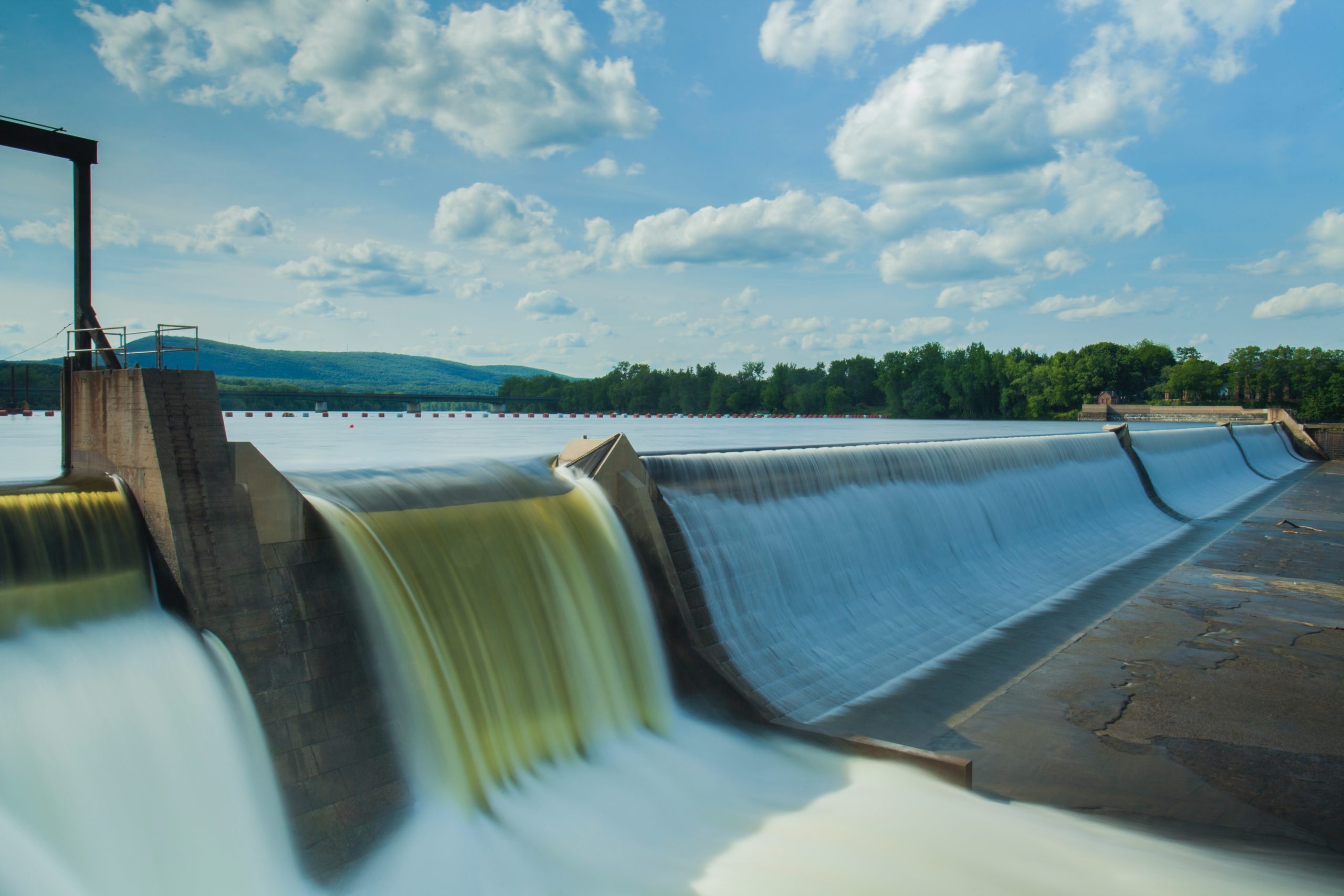You might be wondering what civil engineering is and how civil engineers affect, influence, and improve our daily lives. Think roads, buildings, clean water, sustainable power, and waste management. These cornerstones of society are all thanks to the work of civil engineers, who design, build, and maintain the infrastructure that supports our modern society.
Civil engineers work on projects including roads, bridges, buildings, and water systems and they make a constant tangible impact on society. Civil engineers ensure safety and play a vital role in tackling some of the world’s most pressing environmental problems, including climate change, waste management, and urbanization.
Civil engineering is a diverse career path, and the areas of focus can vary widely. However, there are six common types of civil engineering:
- Transportation engineers focus on designing and constructing the transportation systems we rely on, including rail, roads, bike paths, planes, and boats.
- Structural engineers design structural components of buildings and other structures, from skyscrapers to homes, ensuring they can withstand forces like winds and earthquakes.
- Environmental engineers focus on problems relating to the environment and protect human health by creating safer water systems and waste management.
- Geotechnical engineers work to understand how structures like roads and canals interact with the ground, potentially changing the terrain and uncovering hazards within the ground.
- Coastal engineers deal with the design, construction, and maintenance of coastal structures, including seawalls, breakwaters, and beach nourishment.
- Water resources engineers work to maintain water resources including the design of dams, canals, and other water control structures.
As you can see, while the specific areas of focus may vary, civil engineering is extremely interdisciplinary. Transportation engineers work closely with structural engineers who work closely with environmental engineers and so on.

via Unsplash
Want to learn more about civil engineering and the technologies it utilizes? Head over to our blog to find out how civil engineers use a variety of different resources and technologies to approach today’s issues from transportation to the environment.
In this article, we’ll be covering the work of environmental engineers in particular. We will address the many ways in which civil engineers help preserve and maintain our natural world each and every day.
What Is Civil and Environmental Engineering?
Civil and environmental engineers work to make sure we have the structures and resources that make up society, but they also build structures that sustain our environment and allow for the continued growth of the human population as well as steady innovation. Inevitably, as we urbanize and build structures, we are heavily affecting the environment.
Civil and environmental engineering are extremely intertwined. They are so linked, in fact, that many educational institutions label their majors or programs of study as focusing on “civil and environmental engineering.”
Civil and environmental engineers are perhaps the most interdisciplinary among all areas of focus. Encapsulating skills and resources found in all areas of focus, civil and environmental engineers ensure we have safe, reliable structures and resources in our society.
Because their specialization is so interdisciplinary, civil and environmental engineers are in high demand in the job market. As pressing environmental issues are felt at a global level, civil and environmental engineers offer unique skills, which are assets in maintaining strong and healthy economies, protecting against natural disasters, and enabling livable, sustainable cities for a long time to come.
What Is Environmental Engineering?

via Unsplash
Environmental engineering is a type of engineering that has the goal of protecting humans, animals, and our structures, and causing as little environmental damage as possible while doing so. While still interdisciplinary, environmental engineers are skilled in issues that directly impact the environment.
They use the basics of civil engineering to solve environment-specific problems. It is one of the most important areas of focus within the entire engineering field because it ensures that human impacts on the natural world don’t go too far. After all, we only have one planet.
Environmental engineers utilize sustainable structures both to protect our structures from deterioration and natural disasters and to protect the environment from our structures. Due to these goals, environmental engineers will work on projects like waste management, greener buildings, environmentally vulnerable structures, and projects that mitigate pollution and its effects.
Environmental engineers oversee both man-made problems and problems created by our interaction with the environment. They have to understand the delicate balance between the technological and natural worlds and ensure we are able to promote both.
Because environmental engineers work closely with precarious environmental systems, they use a variety of sciences and engineering practices, including chemical, biological, and physical science, and civil and water resources engineering. Their wide-reaching skills make environmental engineers vital for the survival of both natural ecosystems and our thriving modern society.
Environmental engineers must have a vast and detailed understanding of the pressing engineering and environmental issues of today. They have to come up with creative approaches and solutions that also take into account our environmental impact.
Environmental engineers work to decrease pollutants in the air and water and consider how these pollutants affect the long-term health of humans, animals, and the environmental landscape. There is an abundance of specific projects, resources, and specializations that environmental engineers implore in their work.
What Are the Applications of Civil and Environmental Engineering?
While it may be hard to conceptualize the theoretical parts of civil and environmental engineering, let’s look into some of the practical applications of these specializations, some of which you may interact with in your daily life.
Water Treatment and Supply
This application of civil and environmental engineering focuses on water allocation and supply. Engineers ensure adequate amounts of water are divided between human use and environmental use, while also utilizing sustainable practices. Water sources may include groundwater, lakes, and even water storage facilities.
Wastewater Treatment
Engineers that work with water also help to design wastewater treatment facilities. These facilities treat water after human use, so it may be recycled back into the water supply. Engineers are tasked with doing this without negatively impacting ecosystems and downstream users. Sewer pipelines also fall under this specialty.
Air Pollution Management
Air quality environmental engineers manage and design solutions for air quality and pollution. Poor air quality has clear negative effects on humans and the environment, so engineers develop solutions to decrease and mitigate pollution. That leads to cleaner air and healthier breathing for humans and animals alike.
Environmental Impact Assessments
Environmental impact assessments (EIAs) help engineers assess the environmental impact of a proposed development or solution. EIA considers the interrelated socioeconomic, cultural, and human health impacts in its assessment. EIA is also a helpful tool when going forward with a project so that engineers know where they can reduce adverse impacts.
Environmental Impact Mitigation
One of the objectives of the environmental impact assessment is to identify mitigation measures so that engineers can proceed with their work in the most environmentally sound and healthy way. This decision is made by evaluating the economic, environmental, and social impacts of development activities and carrying on mitigation efforts throughout the entire project that follows.

via Unsplash
What Are the Regulatory Agencies for Environmental Engineering?
There are a handful of federal agencies that are tasked with monitoring the environment and therefore also oversee environmental engineering and engineers. Due to the interdisciplinary nature of civil and environmental engineering, there are many wide-reaching, separate agencies that interact with all focuses of the profession.
The Environmental Protection Agency (EPA) is perhaps the most commonly known environmental regulatory agency. Its mission aligns with that of civil and environmental engineering – to protect human health and the environment.
The Department of Energy (DOE) also works to protect the environment. The DOE’s mission is to ensure America’s security and prosperity by addressing its energy, environmental, and nuclear challenges through transformative science and technology solutions. Civil and environmental engineers specialize in tackling environmental issues through transformative and creative resources that factor in ways to protect the environment.
Civil and environmental engineers are involved in many public works projects that overlap with the DOE’s mission. For instance, they often work on projects involving alternate, clean power sources like water power, wind power, and solar power. Dams are just one example of a place where civil and environmental engineering intersect to harness natural power.
The Department of the Interior (DOI) contains the U.S. Fish and Wildlife Services (FWS), the National Parks Service (NPS), and the United States Geological Survey (USGS). The DOI’s mission is to protect and manage the nation’s natural resources and cultural heritage; provide scientific and other information about those resources; and honor its trust responsibilities or special commitments to American Indians, Alaska natives, and affiliated island communities.
All of these departments are tasked with protecting and managing our national resources, a huge factor in the decision-making of environmental engineers. Managing America’s finite resources (and finding new ways to extend the life and reusability of those resources) is a large piece of what environmental engineers are tasked with.
The U.S. Department of Agriculture (USDA) protects food, agriculture, natural resources, rural development, nutrition, and related issues based on public policy. Environmental engineers recognize the impact they can have on all of the resources listed above and therefore use approaches that mitigate potential damage. They may also be involved in irrigation projects.
The National Oceanic Atmospheric Administration (NOAA) strives to understand and predict changes in climate, weather, ocean, and coasts, to share that knowledge and information with others, and to conserve and manage coastal and marine ecosystems and resources. The knowledge and resources from NOAA are vital to environmental engineers as they strive to understand environmental impacts and issues and make data-driven decisions.
Final Thoughts
Civil and environmental engineers are crucial to the sustainability and betterment of our society. When approaching global issues, we need interdisciplinary fields like civil and environmental engineering to solve big-picture problems. The hardworking individuals within these occupations help us create more sustainable infrastructure and build resilient communities with thriving economies.
Civil and environmental engineering is a broad field and profession, with extensive areas of focus. However, environmental engineering is carried throughout all of the subfields of civil engineering, and experienced practitioners are some of the most valuable resources in our society today.
Civil engineers work in design, research, and construction, and they work on small to large structures, such as transportation systems, environmental impact projects, and water conservation. With a focus on environmental impact and conservation, civil engineers can help us enjoy life on planet Earth for centuries to come.
No matter the specialty, civil engineering is a vital field that supports vulnerable communities, the environment, and important resources on our planet. Head over to the Fenstermaker engineering service page for more information about civil and environmental engineering, its uses, and the services civil and environmental engineers provide.





